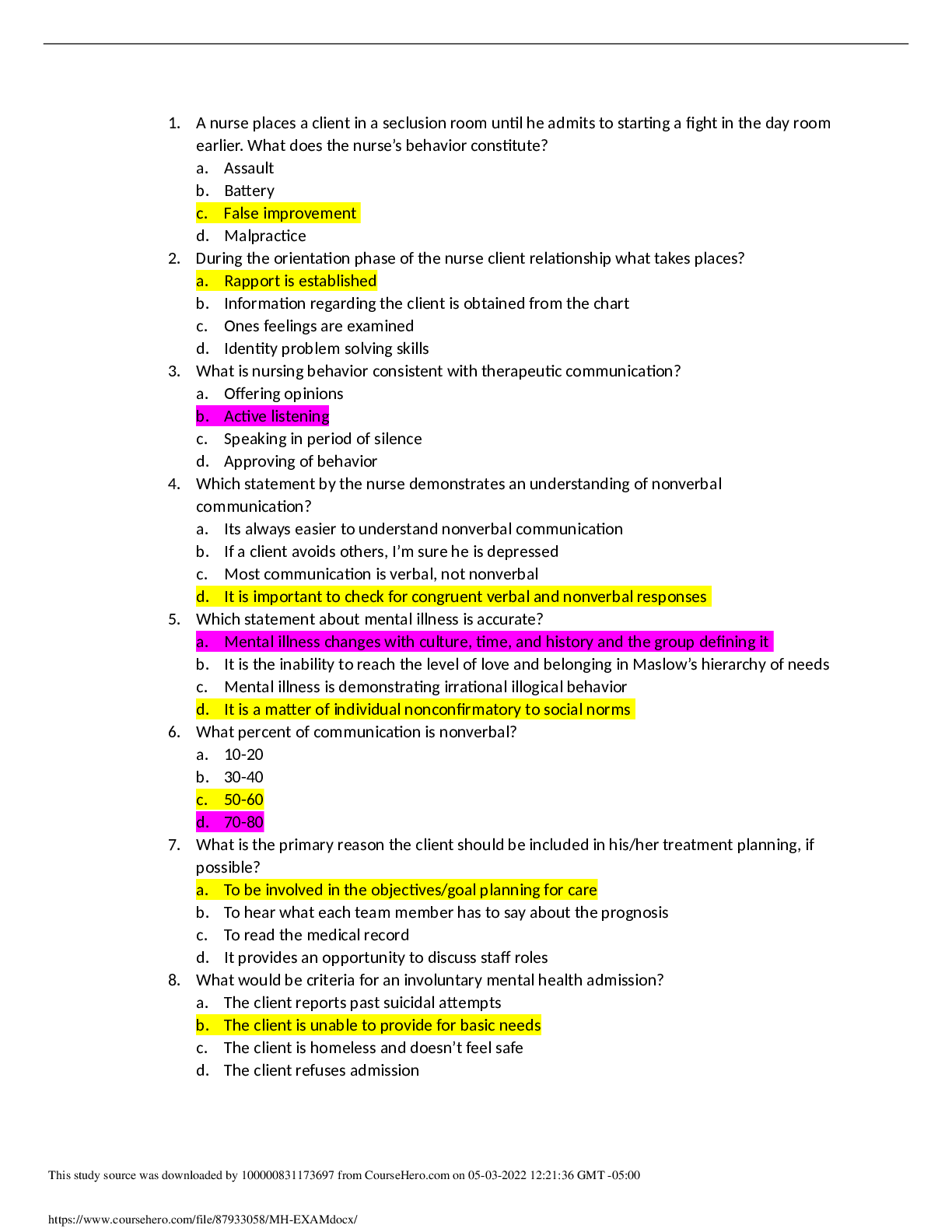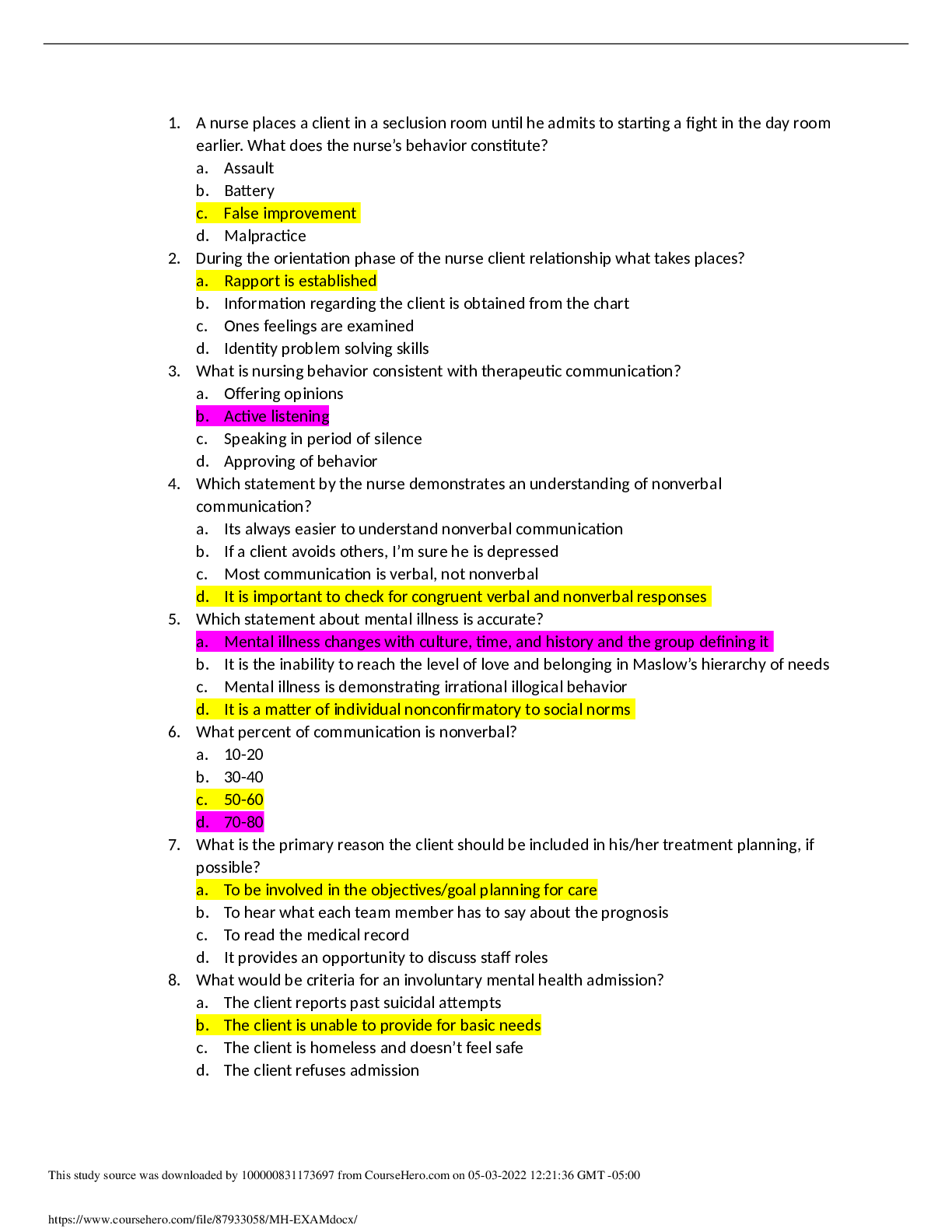NURS 2488 Mental Health(MH) Exam (Verified Answers)
Course
Project Management
Subject
Chemistry
Category
Exam
Pages
6
Uploaded By
ATIPROS
Preview 2 out of 6 Pages


Download all 6 pages for $ 10.00
Reviews (0)
$10.00
